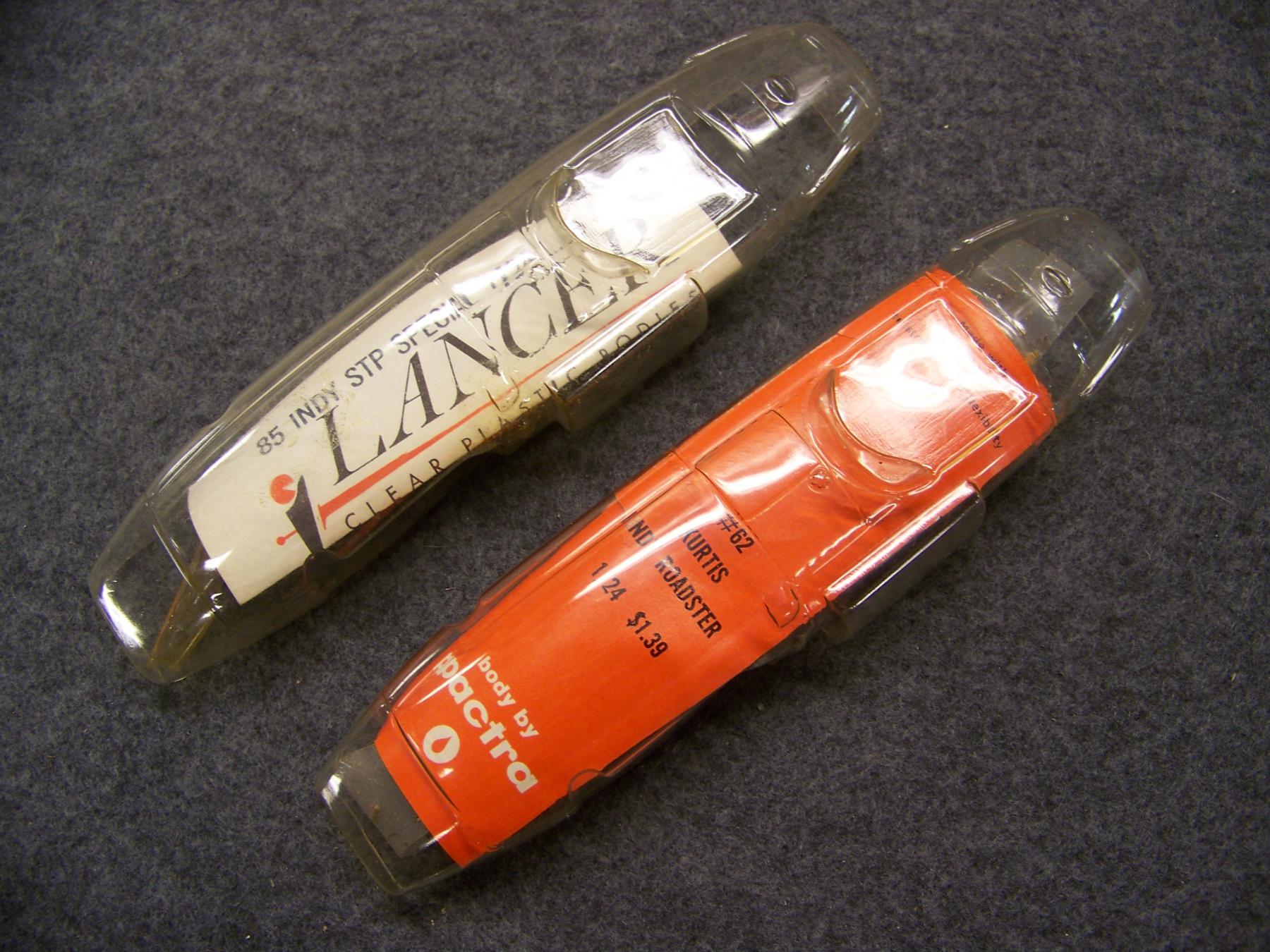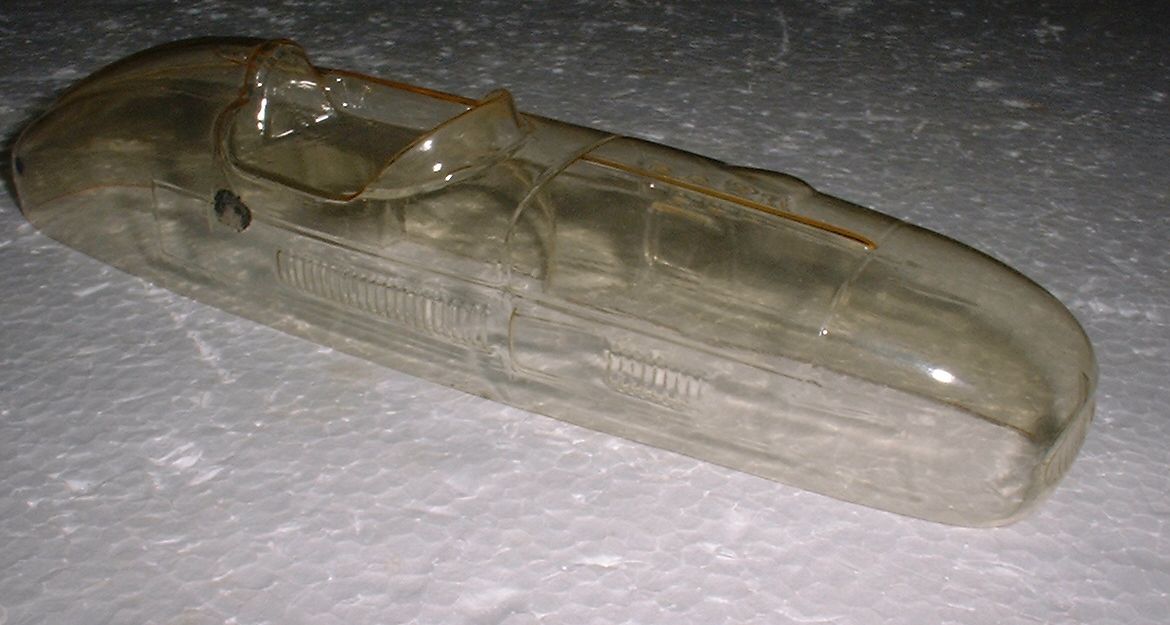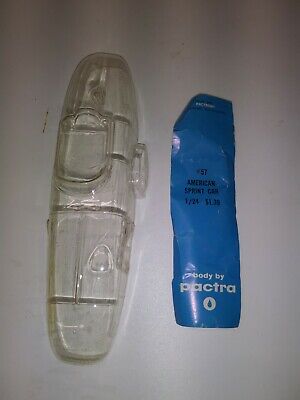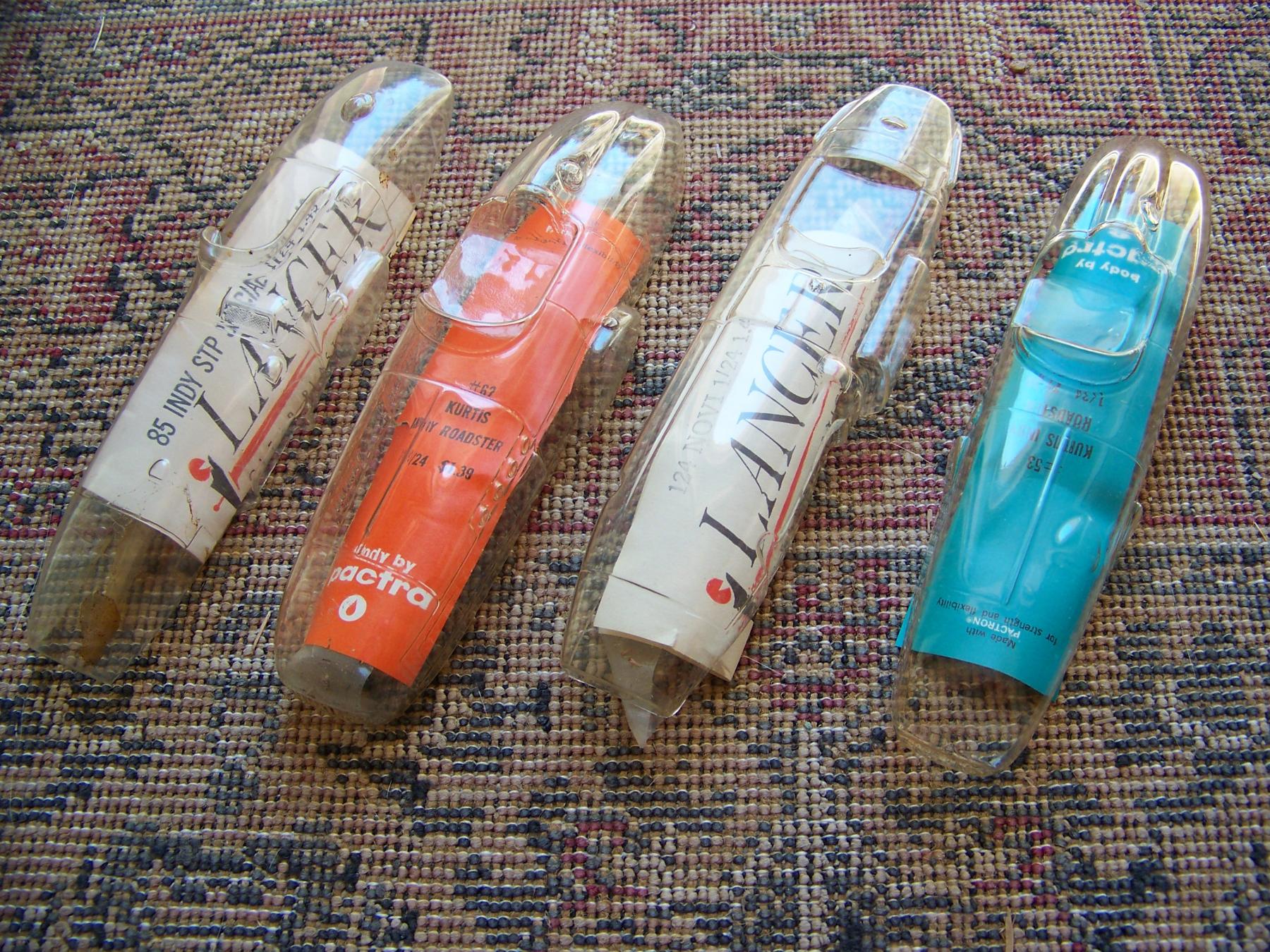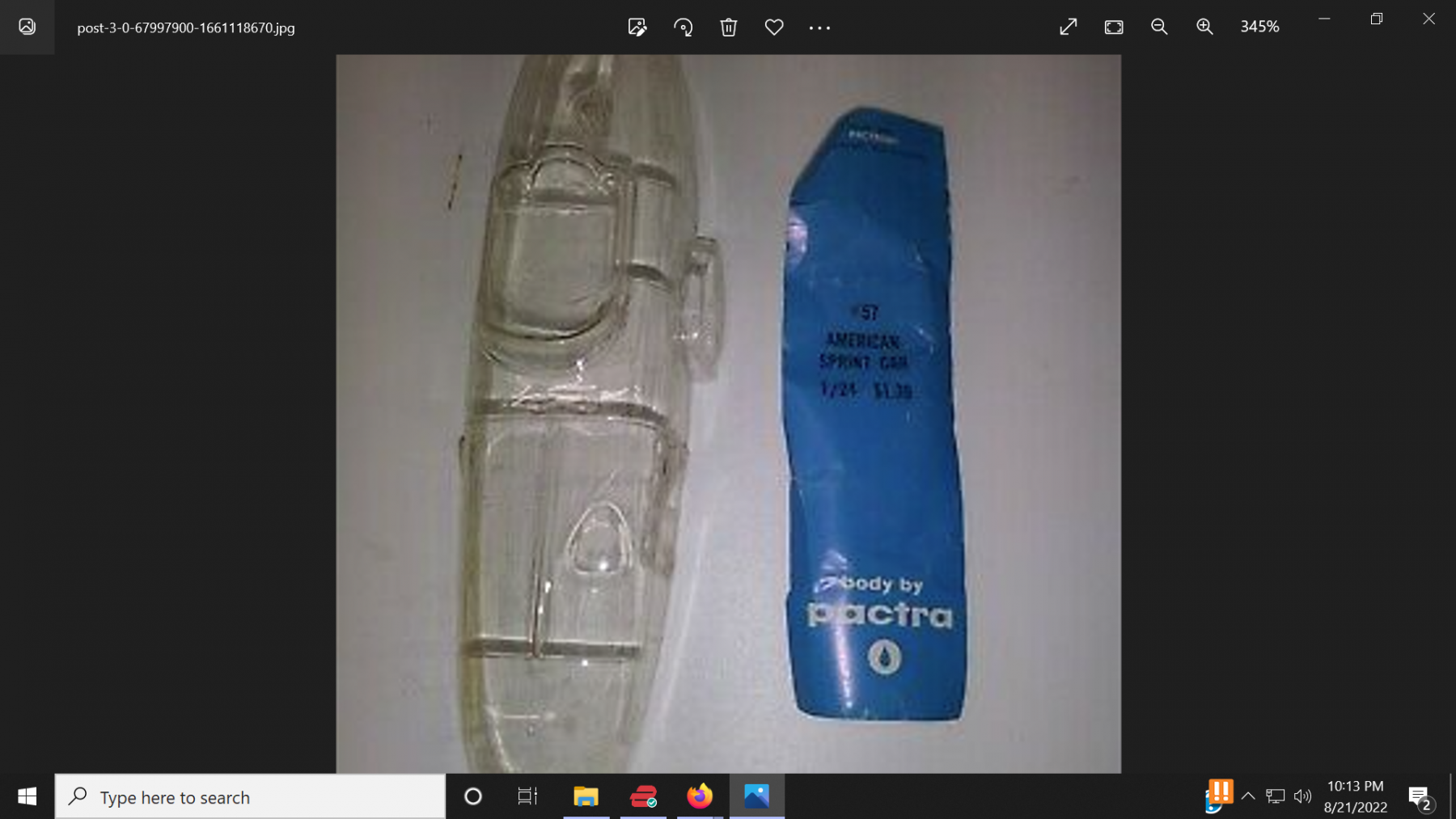The Pactra "Gilmore Spl" (Gilmore was an oil magnate) was a 1928 Miller chassis fitted with the 4-cylinder "marine" engine, as raced at Indy in 1932.

Pactra
#76

Posted 29 June 2020 - 03:34 AM
#77

Posted 29 June 2020 - 05:52 PM
Don, yes. I guess i did not make myself clear enough.
As I mentioned in the previous post, its 1928, single seat body was widened for the new formula in 1930. It was an easy thing to do since the Miller aluminum bodies were merely bolted onto the chassis rails. The Gilmore Spl. had actually a long life and still exists today. It was first built in the Miller shops in Los Angeles in 1925 and first had an 8-cylinder supercharged 91ci engine. It raced at Indy in 1925, 1926 and 1927 without success.
In 1928, Leo Goossen and Harry Miller had developed a low-cost, 2-valve, 4-cylinder engine for boat racing, but rules allowed a greater displacement for such engines, and several Indy racers tried capitalizing on the greater torque offered by a non supercharged, simpler engine. So Wilbur Shaw convinced Earl Bell Gilmore to finance the complete rebuild of the car for the 1928 race, making it effectively a new car, but once more it was unsuccessful.
In 1932, Shaw drove the car again in its wider form, but then left to drive for the Chicago gangster Mike Boyles, and became a 3-time Indy winner, twice in the single seat Maserati 8CTF, the "Boyle Spl.".
The Pactra body is that of the Gilmore Spl. in 1928, absolutely correct with the 4-cylinder marine engine, which it retains to this day as well as its widened body. The car is currently in the IMS museum's basement on loan after it had been sold at auction by Dana mecum in 2010. See its picture here:
https://www.motoraut...rgring-24-hours
There were other "Gilmore Spl." Indy and dirt racing cars, but the one currently in the IMS museum is the actual genuine Miller chassis sporting the 1932 body. After Earl Gilmore sold the car, it raced again at Indy (unsuccessfully) several times. The Gilmore Spl. others entries were Wetteroth built cars, with Offenhauser engines (effectively the Miller marine engine now under Fred Offenhauser's manufacturing after Miller's bankruptcy in 1931), and there is of course the 1935 Ford chassis with the Goossen designed, Offenhauser built V16 engine, the Sampson Special, partially sponsored by Gilmore, another car that still with us today.
Pactra got it right.
Philippe de Lespinay
#78

Posted 20 August 2022 - 05:09 PM
Hi all,
I have these bodies. I believe them to be the Pactra Kurtis Indy roadster as labeled \?
My question what does the Lancer #85 Indy STP special look like? Then I can attach the label to the correct body.
Thanks in advance for the help.
According to Lancer paperwork, the body was sold in 1966.
#80

Posted 21 August 2022 - 08:58 PM
Thanks, Dokk. I hope I have it correct now?
Notice, I have two version of the Pactra Kurtis, one with the side tank one without. Not sure If I have the Pactra label's correct.
There is a # 53 and # 62 both have the same KURTIS INDY ROADSTER name.
Rick T. helped by ID'ing the Lancer NOVI #124 That's the thitd from the left, in case it's hard to read?
#82

Posted 24 August 2022 - 03:25 PM
The label is wrong but the body is the correct Pactra Kurtis "500" Indy car.
There are also 2 "STP" cars from Lancer: one is the 4WD Novi-Ferguson, the other the older 2WD based on a modified Kurtis chassis.
There are also two Pactra Kurtis "500" Indy cars, one has the oil tank, the other does not.
Philippe de Lespinay
#83

Posted 25 August 2022 - 09:30 PM
I am pretty sure my pic shows the two Kurtis's with the correct labels. Easy to spot with the rear head hump and like you say one with the oil tank one with out. But no other difference that I can see.
BTW my tags say KURTIS INDY ROADSTER, #62 and #53, not sure which one has what number?
#84

Posted 26 August 2022 - 06:42 PM
Likely the later number is the one with the oil tank, but I cannot verify this right now.
Philippe de Lespinay
#85

Posted 28 August 2022 - 12:20 AM
Thanks, P,
I was thinking with the same logic. Pactra would make the one with out the tank first and then add the tank after awhile.
Or they made the the one with the tank first, they got too many rejects so decided to eliminate the tank?
#86

Posted 15 September 2022 - 09:10 PM
Not a chance of that, the body pulled easily with or without.
The earlier Kurtis "500" did not have the external oil tank, that became a standard feature by the mid-1950s to increase the fuel tank capacity and solve an oil starving issue. Previously, the oil tank was generally placed in the tail, but the plumbing to reach the oil pumps of the Offy engines was a bit long and resulted in oil starvation at times. Locating the oil tank on the inner side shortened the lines dramatically, and its location avoided the previous problems.
Philippe de Lespinay
#87

Posted 16 September 2022 - 12:16 AM
Thanks Philippe for the info.
I will keep the lower number label with the earlier Kurtis body without the oil tank, and now I have a little more understanding of how they came to be.
- TSR likes this







